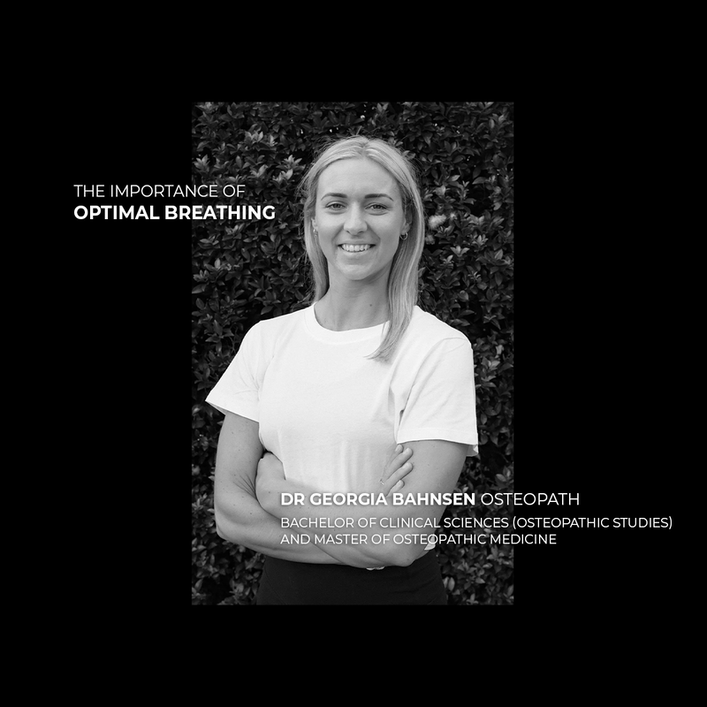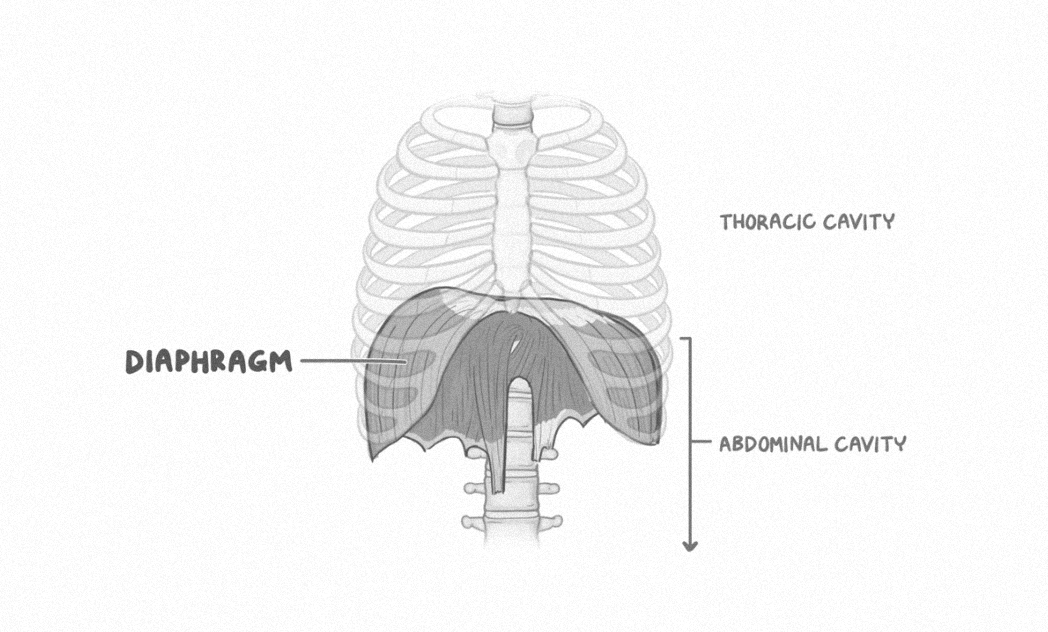Of course, breathing is important. IT HAPPENS AUTOMATICALLY AND KEEPS US ALIVE, BUT MOST OF US NEVER ACTUALLY THINK ABOUT HOW WE ARE BREATHING. Did you know that the way you breathe may lead to pain and tightness in your body? Poor breathing habits can lead to neck pain/tightness, jaw pain, headaches, midback and lower back pain/tightness, pelvic floor pain, shoulder and hip impingement, increased stress levels and decreased athletic performance. The average human takes 22,000 breaths per day. That’s a lot of reps to be performing poorly and a lot of opportunity to create a change. What is optimal breathing and why is it important? Known as diaphragmatic breathing, uses the diaphragm (our main breathing muscle that sits underneath the ribcage) to expand the rib cage and abdominal cavity 360 degrees. It enables the body to take in adequate oxygen (inhale) and get rid of carbon dioxide (exhale). Diaphragmatic breathing is the foundation to be able to create sufficient core stability which is extremely important throughout exercise and our daily movements and activities. Increasing our diaphragmatic breathing capacity can enable increased athletic endurance so we can perform better for longer, less tightness in the body and enhanced quality movement. What is non-optimal breathing? Also known as “stress or chest breathing” predominantly uses the accessory (smaller) muscles in the neck to “lift” the rib cage and suck air in. This shallow breathing only into the upper chest enables less oxygen intake and causes overuse of the neck, chest, and shoulder muscles leading to tightness and pain. Chest breathing can cause overarching of the low back on inhale and the inability to create core stability. It can also trigger cortisol—the stress hormone—to kick in. This type of breathing should be utilised only when needed during hard aerobic activity (as oxygen demands are increased) but NOT be the primary method for getting your oxygen in through day-to-day life. How do we address this? First try this test:
This test can be used as a breathing exercise: Imagine you have a balloon inside your abdominal cavity and as you breathe in you want the balloon to expand 360 degrees (the front, back and sides of your torso). This may seem strange or challenging at first, but it just takes practice and consistency. The diaphragm is a muscle and like any other muscle it needs to be trained and the more it’s trained the more endurance it will build and easier it will feel. - - - - AuthorDr Georgia Bahnsen
0 Comments
Your comment will be posted after it is approved.
Leave a Reply. |


 RSS Feed
RSS Feed